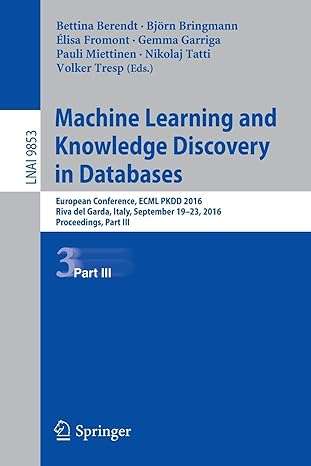Question
JAVA need HELP PLZ! This is the cpp needed. CardArrayMaster.java: /* Card Array Master is a generic class usefull for you to test your *
JAVA need HELP PLZ!
This is the cpp needed.
CardArrayMaster.java:
/* Card Array Master is a generic class usefull for you to test your * CardArrayList class. At the beginning it is heavily commented out * but as you get more and more working, you can remove sections * to test various things out. */ import java.util.*; import java.io.*;
public class CardArrayMaster {
public static void main(String[] args) { PrintStream SO = System.out; // Lazy mode enabled; // STAGE 1 // Can we add to a master list and print it out? CardArrayList masterList1 = new CardArrayList(); masterList1.add(new Card()); masterList1.add(new Card(20)); masterList1.add(new Card(10,10)); SO.print("Initial list : "); SO.println(masterList1); // STAGE 2 // Can we add a premium card? // masterList1.add(new PremiumCard(100)); // SO.print("Premium Card : "); // SO.println(masterList1);
// STAGE 3 // Can we add cars in the middle? // masterList1.add(1, new Card(4,4)); // masterList1.add(1, new Card(5,5)); // SO.print("Added internal : "); // SO.println(masterList1); // STAGE 4 // can we add more cards and make it expand? // masterList1.add(new Card(6)); // masterList1.add(new Card(7)); // masterList1.add(new Card(8)); // masterList1.add(new Card(9)); // masterList1.add(new Card(10)); // masterList1.add(new Card(11)); // masterList1.add(new Card(12)); // SO.print("After Expand : "); // SO.println(masterList1);
// STAGE 5 // Can we Remove the end value // masterList1.remove(); // SO.print("After Remove : "); // SO.println(masterList1); // STAGE 6 // Does remove return the removed value? // SO.print("Removed value : "); // SO.println(masterList1.remove() ); // SO.print("List afterward : "); // SO.println(masterList1); // STAGE 7 // Did it remove from the middle // And return the value removed? // Card tmp = masterList1.remove(2); // SO.print("Removed value : "); // SO.println(tmp); // SO.print("List afterward : "); // SO.println(masterList1); // STAGE 8 // Did get work correctly? // SO.print("Get Values : "); // SO.println(masterList1.get(2) + " : " + masterList1.get(4) ); // masterList1.get(2).weaken(); // masterList1.get(4).boost(); // SO.print("Altered Values : "); // SO.println(masterList1.get(2) + " : " + masterList1.get(4) );
// STAGE 9 // IndexOF // SO.print("Found Success : "); // SO.println(masterList1.indexOf(new Card(110,110))); // SO.print("Found Failed : "); // SO.println(masterList1.indexOf(new Card(99,99))); // SO.print("Found Failed : "); // SO.println(masterList1.indexOf(new Card(600,600))); // STAGE 10 // Does shuffle work? // SO.print("Before shuffle : "); // SO.println(masterList1); // masterList1.shuffle(); // SO.print("Post shuffle 1 : "); // SO.println(masterList1); // masterList1.shuffle(); // SO.print("Post shuffle 2 : "); // SO.println(masterList1); // STAGE 11 // Does Clear Work? // masterList1.clear(); // SO.print("After Clear : "); // SO.println(masterList1); // STAGE 12 // Create a large list // And check that sort works. // for (int i=0; i
// STAGE 13 // Can we create a second list // and make a copy of all NON premium cards // CardArrayList masterList2 = new CardArrayList(1); // for (int j = 0; j 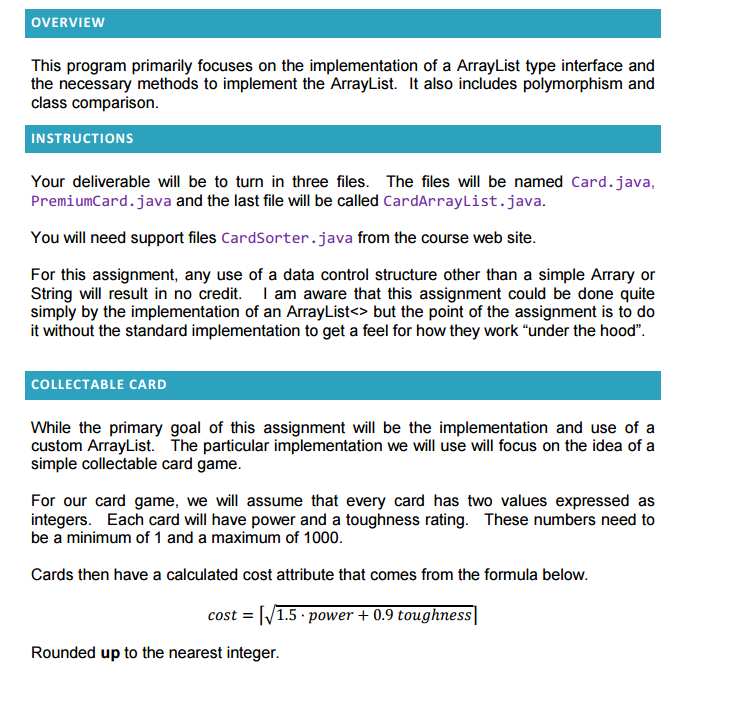

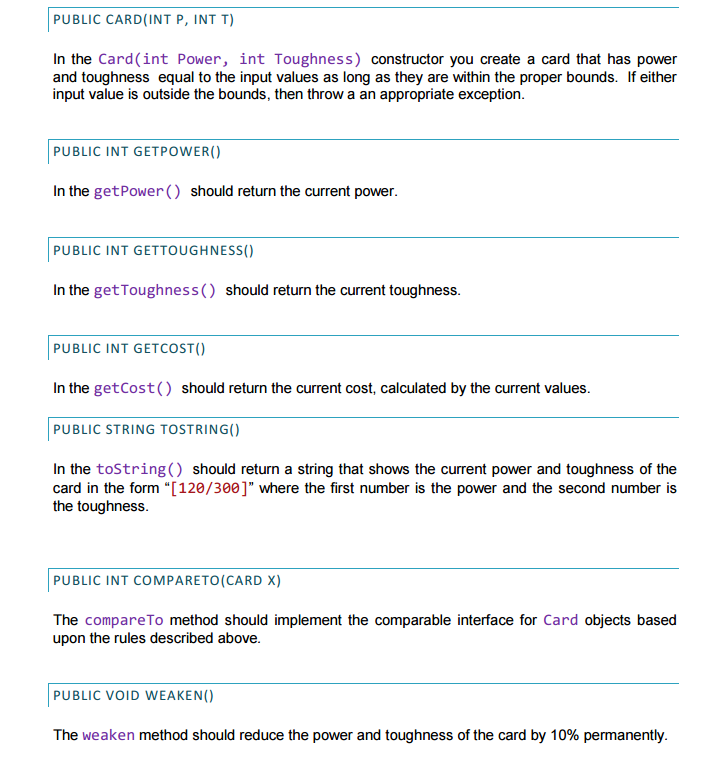
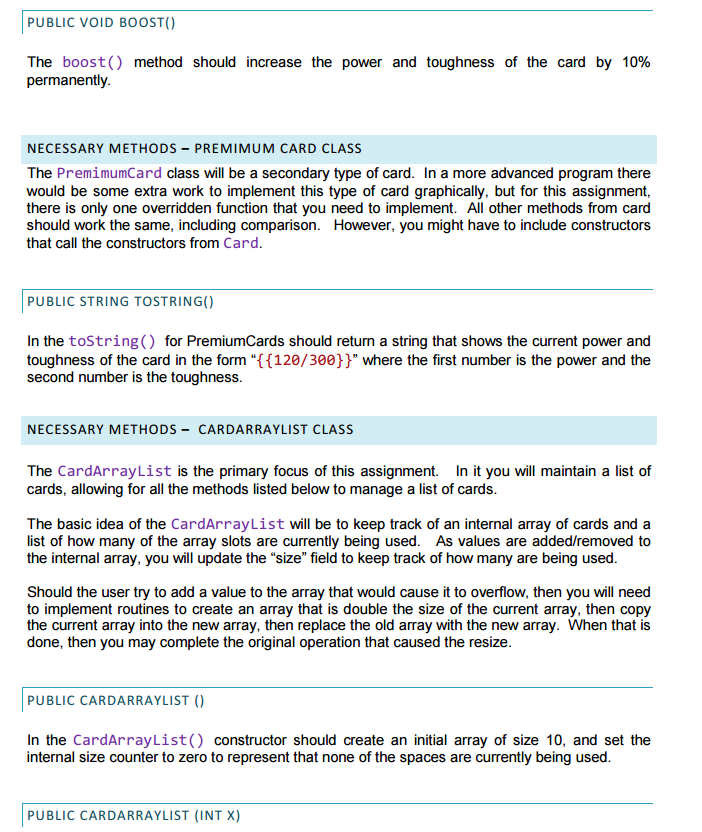
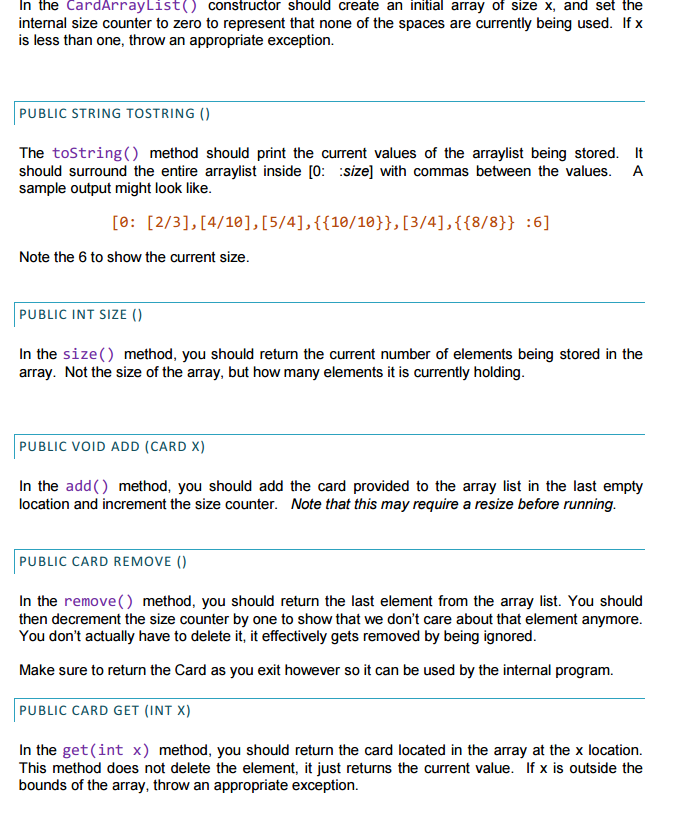
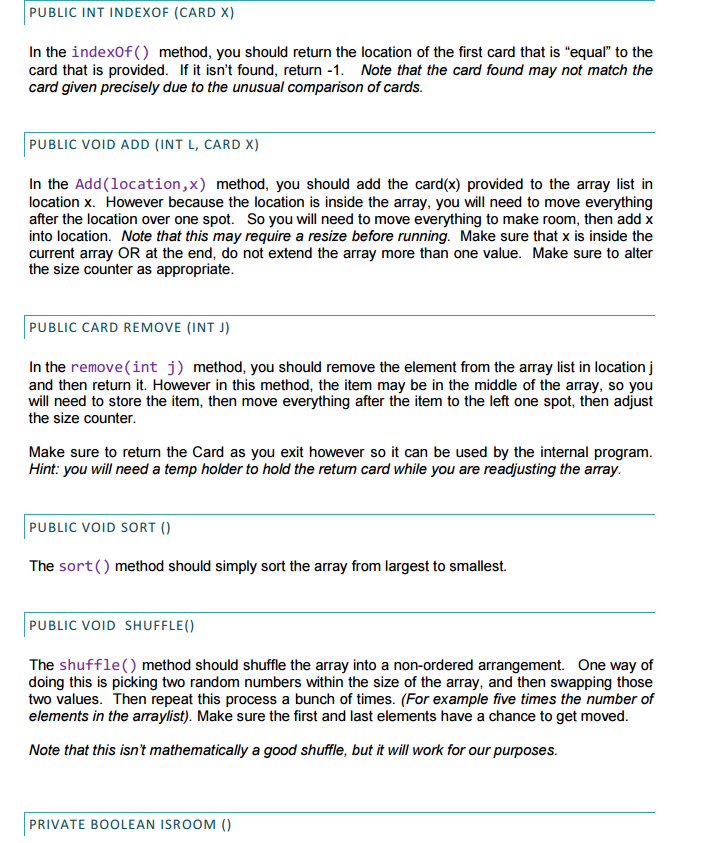
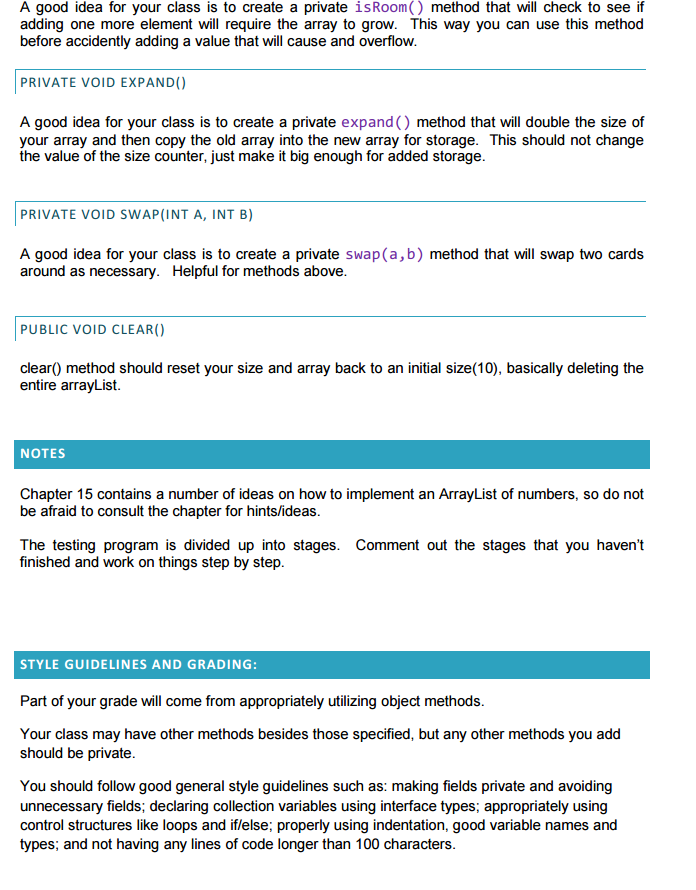

Step by Step Solution
There are 3 Steps involved in it
Step: 1

Get Instant Access to Expert-Tailored Solutions
See step-by-step solutions with expert insights and AI powered tools for academic success
Step: 2

Step: 3

Ace Your Homework with AI
Get the answers you need in no time with our AI-driven, step-by-step assistance
Get Started


